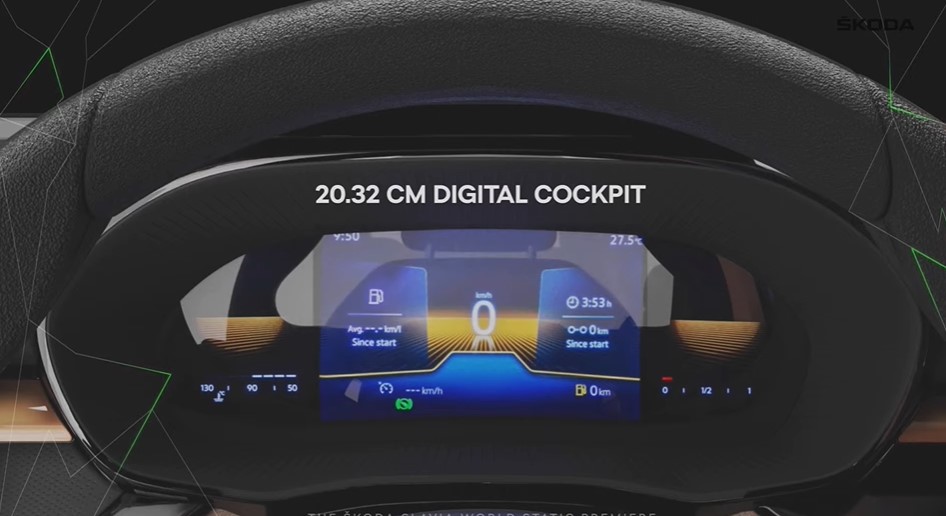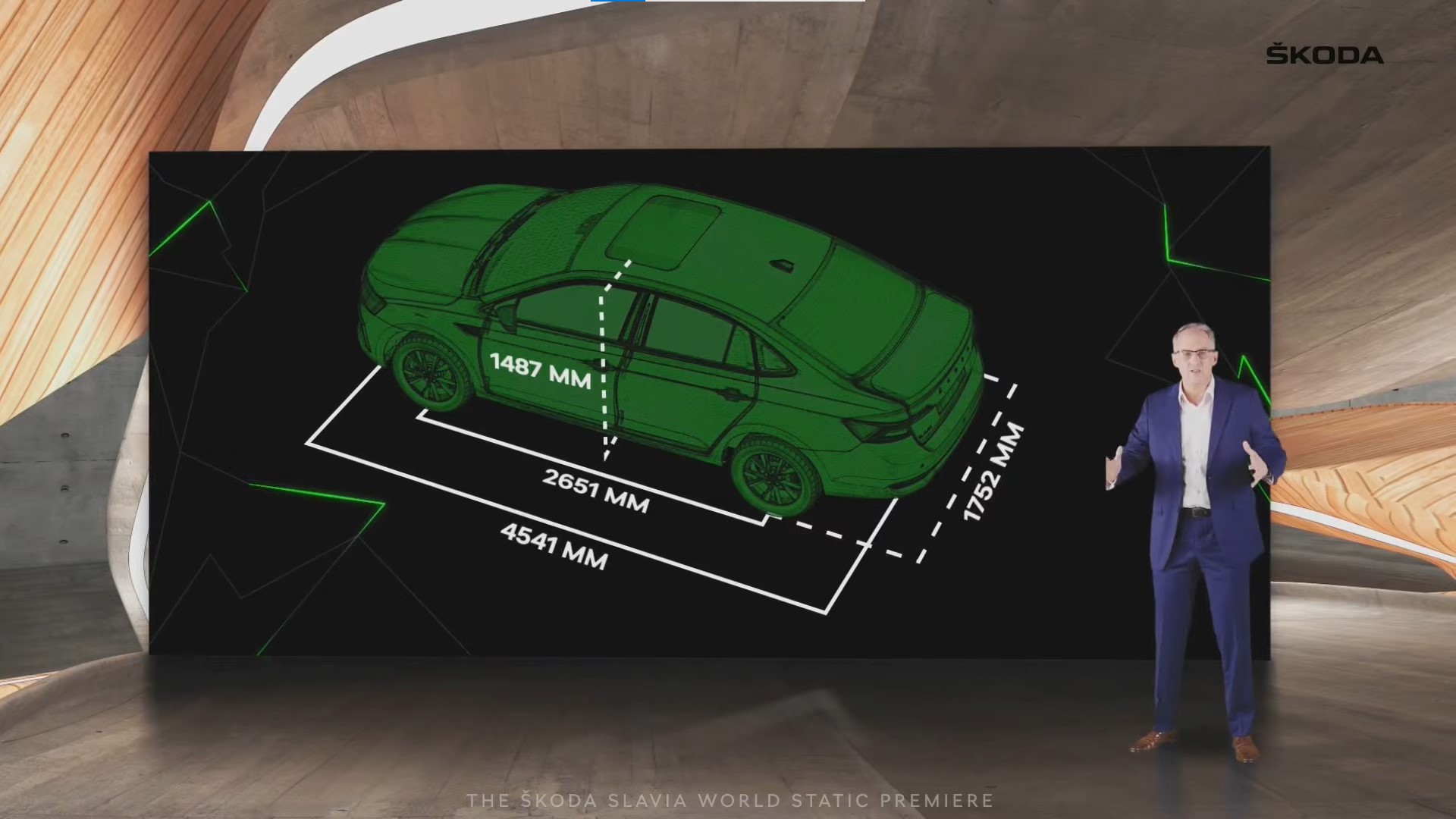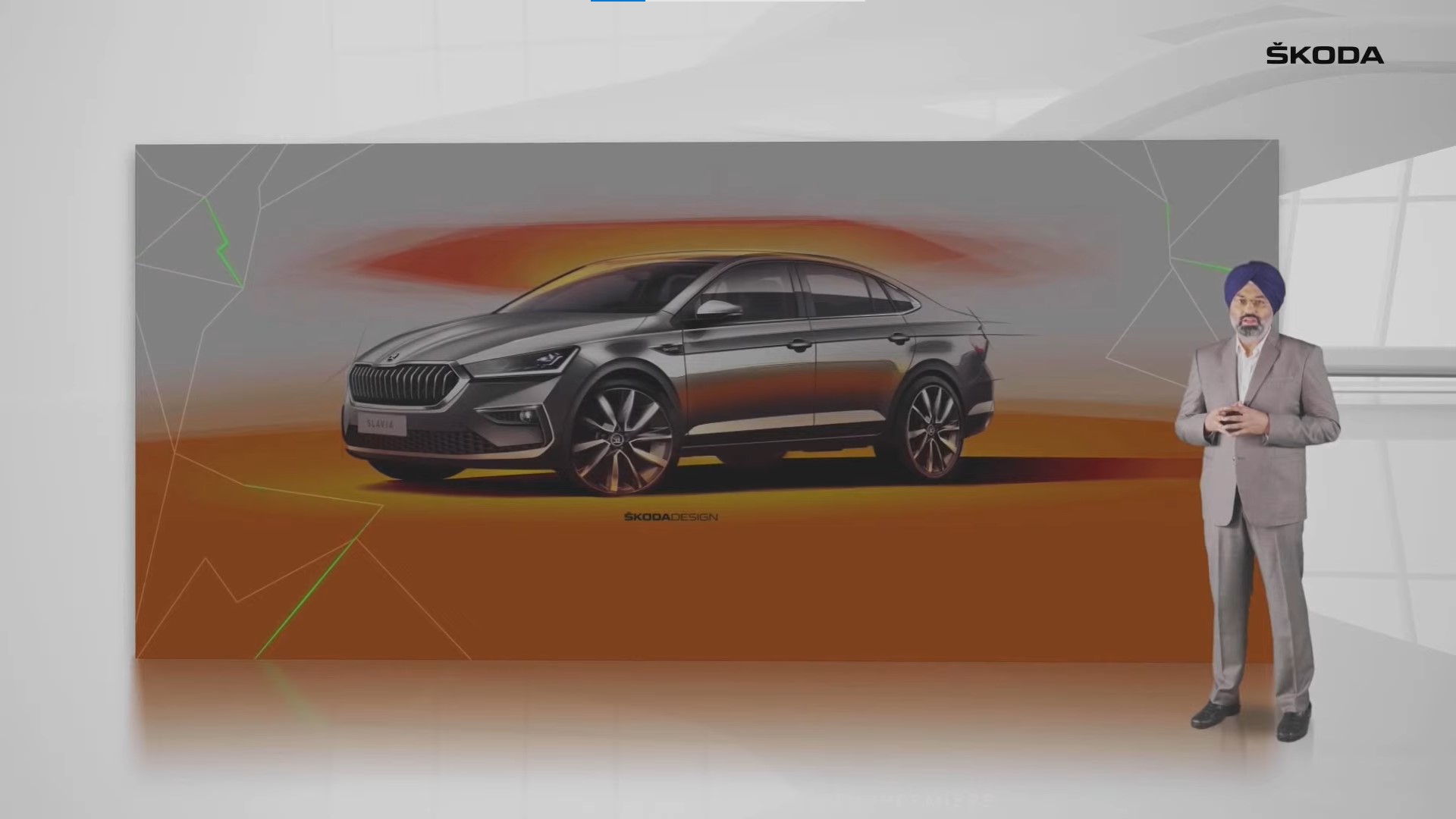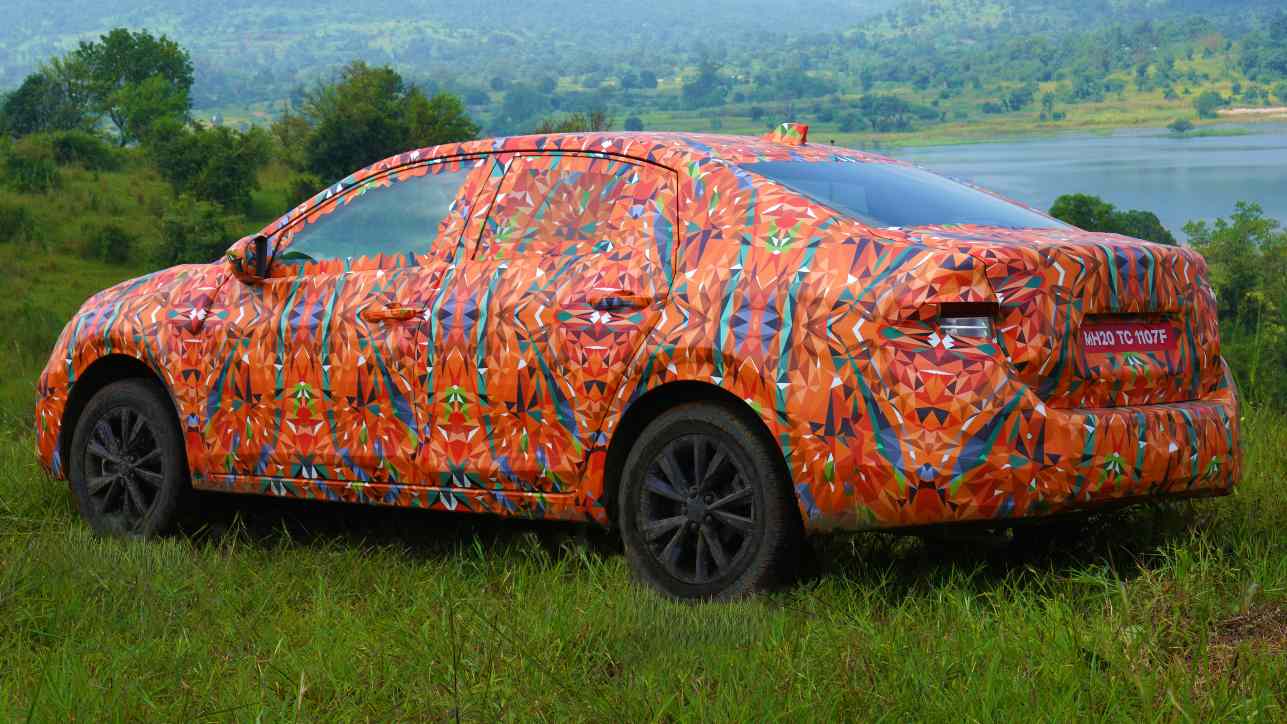Skoda Slavia unveil in India LIVE updates: World premiere of Skoda’s new City rival begins
14:20 (IST)
Skoda Slavia: Features
The top-spec Slavia will feature ventilated front seats, the Kushaq's touchscreen infotainment system as well as a full-digital instruments display, which is missing from the Kushaq.
14:18 (IST)
Skoda Slavia: Dimensions
The Slavia is larger than the Gen 1 Octavia, and Skoda claims will be the widest sedan in its segment. Here's a quick look at some of its dimensions.
14:10 (IST)
Skoda Slavia: A glimpse before the unveil
Here's a clearer look at the Skoda Slavia - Gurpratap Boparai reveals a design sketch of the sedan minutes before its full unveiling.
14:07 (IST)
Slavia vital for Skoda globally
Thomas Schafer adds the Slavia will be instrumental in helping Skoda become the leading European carmaker in India, and will help the company breach the target of 1.5 million vehicle sales globally.
14:05 (IST)
Skoda Slavia: World premiere event begins
Kicking off the unveil event of the Skoda Slavia is Skoda Auto CEO Thomas Schafer, who says 2020 and 2021 have been incredibly challenging years, but the company has achieved up to 95 percent localisation levels for its MQB A0 IN models.
13:54 (IST)
Skoda Slavia unveiling: Watch it LIVE
You can follow the live stream of the Skoda Slavia's world premiere right here.
13:46 (IST)
Skoda Slavia to spawn Volkswagen alternative
Just like the Kushaq preceded the Taigun, the Slavia will precede Volkswagen's brand-new midsize sedan, understood to be based on the Virtus facelift. It will be almost identical in terms of size and will have the same mechanicals, but will look significantly different inside and out. Today, however, is all about the Slavia, the unveil of which begins in less than 15 minutes from now!
13:33 (IST)
Skoda Slavia: The origins
The Skoda Slavia will be the third model to use the Volkswagen Group’s tailored-for-India MQB A0 IN platform – the first two being the Skoda Kushaq and the Volkswagen Taigun midsize SUVs, which were launched just a few months ago.
13:15 (IST)
Skoda Slavia world premiere: The countdown begins
Hello and welcome, folks, to Tech2's live coverage of the world premiere of Skoda's new midsize sedan - the Skoda Slavia. The unveil gets underway at 2 pm IST, so sit back as we bring you all the updates LIVE from the event!
Today is the day – the Skoda Slavia is about to make its world premiere right here in India, and the unveil event is set to begin at 2 pm IST. The Skoda Slavia will be the third model to use the Volkswagen Group’s tailored-for-India MQB A0 IN platform – the first two being the Kushaq and the Volkswagen Taigun midsize SUVs – and is likely to be launched early in 2022. A few days ago, Skoda revealed the Slavia will measure 4,541 mm in length, 1,752 mm in width and 1,487 mm in height, making it one of the biggest sedans in its class. The Slavia’s 2,651 mm wheelbase is also among the largest in the midsize sedan segment.
The Slavia name, says Skoda, has been chosen as an ode to its past, as company founders Václav Laurin and Václav Klement had marketed their own bicycles under the same name in 1896. While the company has refrained from giving too much away at this point, it says its new ‘notchback’ will be ‘an elegant, powerful and safe saloon car’ that will follow in the footsteps of the bigger, more powerful and more luxurious Skoda Octavia and Skoda Superb sedans. Tech2 understands that with the Slavia, Skoda will focus equally on driving pleasure as well as rear seat comfort, with space for rear passengers being among the top priorities for the company.
Expect to see an interior similar to that of the Kushaq with several elements – such as the 10-inch touchscreen infotainment system two-spoke steering wheel, a touch-sensitive climate control panel and vital control switches – to be carried over from the midsize SUV, but Skoda is likely to add some more feel-good features to the Slavia.
Just like the Kushaq, the Skoda Slavia, too, will be offered will be two turbo-petrol engine options – a 1.0-litre, three-cylinder TSI that makes 110 hp and 175 Nm of torque, and a 1.5-litre, four-cylinder TSI producing 150 hp and 250 Nm of torque. A six-speed manual will be available with both engines; the 1.0 TSI will have the option of a six-speed torque convertor automatic, while the 1.5 TSI – aimed at driving enthusiasts – will be available with a seven-speed DSG automatic (with paddle shifters). There will be no diesel engine on offer, but the 1.5-litre TSI will feature active cylinder deactivation tech, which will help boost fuel efficiency.
Expect Skoda Slavia prices to range from Rs 10-17 lakh (ex-showroom), which will enable it to go head-on against the fifth-generation Honda City, Hyundai Verna, Maruti Suzuki Ciaz and Toyota Belta. It will also compete against its cousin from Volkswagen, which will be based on the same platform, and will be launched a little after the Slavia.
source https://www.firstpost.com/tech/auto-tech/skoda-slavia-unveil-in-india-live-updates-world-premiere-of-skodas-new-city-rival-begins-10146141.html





















